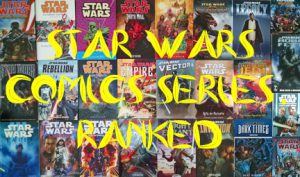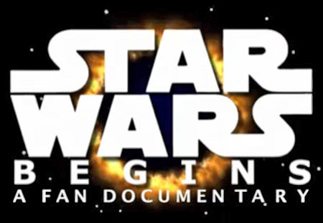I don’t mean to rain on the parade of fans who are excited for the Sept. 16 release of the “Star Wars” saga on Blu-ray, but I’m not getting too worked up about it. As readers of my blog know, I am a technological laggard despite being a TV and movie geek; I just got a widescreen TV a few months ago and I’m quite happy picking up cheap TV-show DVDs dumped off by Blu-ray upgraders.
Granted, the deleted scenes will be cool, and there will certainly be some new featurettes (although a lot of them are reissues). As for George Lucas’ alterations to the films: I just don’t care anymore. I was excited about the 1997 Special Edition add-ons (some of which I liked, most of which — upon reflection — I don’t), I was angered by the 2004 DVD adjustments and I can only scoff at the 2011 Blu-ray changes such as Darth Vader screaming “No!” as he watches Luke being tortured by the Emperor.
But, hey, I have my original versions on VHS, and I’m more content-minded than presentation-minded, so Lucas can do what he wants as long as he doesn’t break into my place and smash my originals like he wants to do with all bootlegged copies of the “Star Wars Holiday Special” (in the latter case, I support his aim).
And as for the behind-the-scenes stuff, I always love hearing about the making of the “Star Wars” films even though I know the story pretty well by now. But here’s an open secret: Arguably the best documentaries about the three original films are available for free, full-length on YouTube. The three documentaries are called “Star Wars Begins,” “Building Empire” and “Returning to Jedi.”
Now, it must be noted that Jamie Benning didn’t generate any of this material himself (although he did some serious digging to acquire some rare material). But the way he puts together the audio interviews, behind-the-scenes video, alternate line readings from early cuts, alternate angles from trailers, deleted scenes, never-shot scenes that appear in the Marvel Comics adaptations, and on-set audio is utterly brilliant (and, in retrospect, kind of obvious): He delivers this information chronologically, while the film is playing.
I already knew about 80 percent of the information Benning presents, but it’s a joy to absorb it as the films play behind it or in front of it (by the way, these are the original versions, thus adding to the nostalgic appeal). And that 20 percent I didn’t know is fascinating. As mentioned above, Lucas has openly tweaked his films several times, but if you want to be thorough, the number of versions of the original trilogy is many more than we realize. Rare, early prints of the film (which Benning calls “8mm” or “mono” versions) have some alternate and extended line readings; for example, on one cut of “Empire,” C-3PO says the prequel-esque cheesy line “It’s wonderful to be together again” before saying “Of course I’ve looked better!” Not a big deal to casual fans, but a golden bit of trivia to a geek like me.

Benning does his best work on “Star Wars,” where we get to see the deleted Biggs scenes inserted into the film, the “Lost Cut” cantina booth conversation (edited loosely, thus slowing down the pace of the film and demonstrating the overall problem with the Lost Cut), the original Jabba-as-a-human scene spliced together from various sources, and the on-set audio from the guy speaking Greedo’s lines in English.
“Empire” hits some slow patches on Dagobah and Cloud City where the film plays for a couple minutes at a time without any behind-the-scenes info; we get a lot of great Norway footage during the Hoth sequence, though. “Jedi” is the weakest entry because Benning cribs liberally from what is probably the most widely seen documentary, “From Star Wars to Jedi: The Making of a Saga.”
Still, no matter how big of a fan you are, I promise you’ll find something new in each of the three documentaries. Perhaps most impressively, Benning keeps things brisk and doesn’t overwhelm the viewer despite the wealth of information he’s presenting. Aside from the back-to-back comparison of line readings, and the reconstructed deleted scenes, the forward movement of the films doesn’t stop. As a result, the documentaries run only about 20 minutes longer than the films.
What are your favorite “Star Wars” documentaries? Are you excited about the Blu-rays or have you been desensitized to all the reissuing of “Star Wars?”

